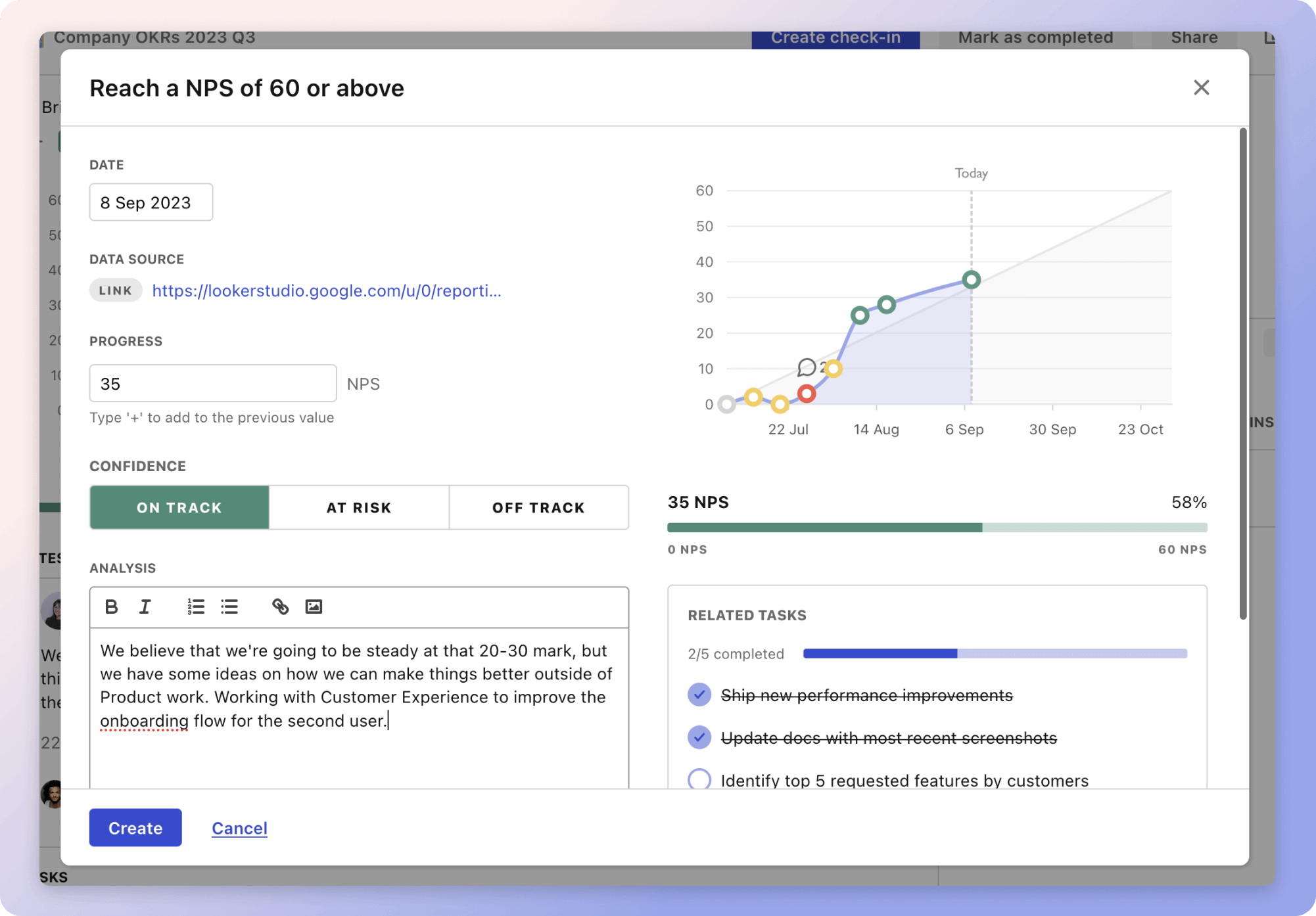The strategy of developing an organizational health metrics framework involves several structured steps to ensure comprehensive measurement and improvement of an organization's health. Initially, conducting a needs assessment is crucial. This includes identifying key stakeholders, reviewing existing data, and determining goals. For instance, engaging with department heads can help understand departmental health metrics, while researching industry standards provides external benchmarks.
Next, designing a comprehensive metrics framework is vital. This step involves defining key health dimensions and selecting a balance of quantitative and qualitative metrics. For example, developing detailed descriptions and measurement methods ensures clarity, while creating visualization tools aids in effective metric presentation and analysis.
Finally, implementing and monitoring the framework ensures continuous improvement. Developing a communication plan and conducting training sessions help integrate the framework into existing processes. Regular review meetings and periodic audits maintain data accuracy. Gathering feedback and making necessary revisions help refine the framework, ensuring it remains effective in impacting organizational health positively.
The strategies
⛳️ Strategy 1: Conduct a needs assessment
- Identify key stakeholders and gather their input on organisational health priorities
- Review existing organisational health data and reports
- Determine the specific goals and outcomes of the organisational health framework
- Conduct a gap analysis to identify missing metrics and data sources
- Engage with department heads to understand departmental health metrics
- Research industry standards and benchmarks for organisational health
- Develop a list of potential metrics to consider for the framework
- Set criteria for assessing the relevance and impact of potential metrics
- Prioritise metrics based on alignment with organisational goals
- Draft a report summarising the needs assessment findings
⛳️ Strategy 2: Design a comprehensive metrics framework
- Define key dimensions of organisational health to be measured
- Select a balanced set of quantitative and qualitative metrics
- Develop detailed descriptions and measurement methods for each metric
- Establish data collection and reporting procedures for each metric
- Identify responsible parties for data collection and analysis
- Create a timeline for regular metric review and updates
- Incorporate feedback mechanisms for continuous improvement
- Ensure alignment of the framework with organisational strategy
- Design visualisation tools to effectively present metrics
- Test the framework and make adjustments as necessary
⛳️ Strategy 3: Implement and monitor the framework
- Develop a communication plan to share the framework with staff
- Conduct training sessions on the use and interpretation of metrics
- Integrate the framework into existing organisational processes
- Establish regular review meetings to discuss metric outcomes
- Evaluate the framework's impact on organisational health over time
- Encourage leadership to model and promote metric use
- Adjust staffing and resources based on metric insights
- Conduct periodic audits to ensure data accuracy and reliability
- Gather feedback from stakeholders on the framework's effectiveness
- Update and refine the framework based on new insights and changes
Bringing accountability to your strategy
It's one thing to have a plan, it's another to stick to it. We hope that the examples above will help you get started with your own strategy, but we also know that it's easy to get lost in the day-to-day effort.
That's why we built Tability: to help you track your progress, keep your team aligned, and make sure you're always moving in the right direction.

Give it a try and see how it can help you bring accountability to your strategy.
